I’ve only made a few sponge cakes in my life, and always with wheat flour, using a bit of whole-wheat and some white flour. I had also always used butter in the previous ones I had made (which is delicious too!), so I was excited to replicate this delicious cake in a dairy-free version so that my husband could eat some too, and of course, I really wanted to make it 100% whole grain using a different grain than the usual durum wheat that everyone uses all the time. And I also don’t use any synthetic dyes, but I still wanted it to look yellow…. So! This delicious Olive oil lemon spelt sponge cake with dairy-free custard was born!
Different Flours
If you’ve never ventured into the wonderful world of flours other than durum wheat (also called hard wheat), I highly recommend it. There are many, many other options available in most stores nowadays. Buckwheat, rye, spelt, chickpea, coconut, lentil, soft wheat, brown rice, teff, amaranth, quinoa, etc. etc. Some are naturally gluten-free, and some are low-gluten, which means they do contain some gluten, but not nearly as much as durum wheat, which makes it easier to digest for most people. Even the soft pastry flour uses soft wheat (different than durum wheat), which is a naturally low-gluten flour.
I love experimenting with different grains for taste and variety. It’s so tasty! Spelt flour is one of the easiest to transition into from durum wheat because it is very similar in taste and appearance, it is affordable and widely available in stores or online (like this Bob’s Red Mill Spelt flour on Amazon.ca or on Amazon.com – affiliate links). It is light in colour, fluffy (especially if you get stone-ground spelt flour), and has a low gluten content so it reacts very similarly when you use it in your baked goods. You can use the same amount, cup for cup, as wheat in your favourite recipes. Make sure you buy whole spelt flour (you’ll see the specks of fibre) and use it in muffins, cakes and cupcakes, or pie. What a great way to introduce healthy fibres in your family diet, as well as a wide range of various nutrients and minerals that are not in durum wheat. It’s also nice to eat something different than always the same boring wheat 😉
You won’t be disappointed!
Enjoy!
ECP xo
P.S.: The recipe calls for a 9″ round cake pan, but in my picture, I used 2 glass containers (oven-proof) that were 7″ in diameter, so that explains why the layers are thicker, but smaller. 😉
Some people have mentioned that organic food is not always easy to find where they live, so here are some links of products I personally use in my baking that you can buy online through Amazon.ca or Amazon.com (affiliate links):
Organic & fair-trade Sucanat (whole cane sugar): Amazon.ca or on Amazon.com
Organic & fair-trade unbleached white sugar: Amazon.ca or on Amazon.com
Organic pure vanilla extract: Amazon.ca or on Amazon.com
Organic turmeric powder: Amazon.ca or on Amazon.com
Organic vegan buttery spread: Amazon.com
Organic extra virgin olive oil: Amazon.com
Olive Oil Lemon Sponge Cake with Dairy-Free Custard | Low Sugar, Dairy-Free
A delicious and healthy recipe for an Olive oil lemon spelt sponge cake with dairy-free custard. A wonderful cake for special occasions!
Ingredients
Dairy-Free Lemon Curd
- 1 organic lemon (MUST be organic since we eat the skin in this recipe, and washed), zested (you can use the small side of a cheese grater if you don't have a zester), and then squeezed to have 6 Tbsp of lemon juice (you might need another lemon)
- 3 Tbsp freshly squeezed organic orange juice
- 1/4 cup organic blond cane sugar
- 2 organic free-range eggs at room temperature
- 2 Tbsp organic extra virgin olive oil
- 2 Tbsp rice milk or almond milk
- 1/2 tsp pure organic vanilla extract
Sponge Cake
- 5 organic free-range eggs at room temperature
- 1/2 cup organic unbleached cane sugar
- 1/2 organic lemon washed and zested
- 2 Tbsp freshly squeezed lemon juice
- 1/2 tsp pure vanilla extract
- 1 cup spelt flour (ideally stone-ground, sifted until almost nothing left in sieve, which will add air and remove some of the larger pieces, but keep most of the fibre)
- 1/4 cup extra-virgin olive oil
Icing
- 6.5 oz vegan organic buttery spread
- 1/2 lb organic icing sugar
- 1 tsp pure vanilla extract
- 1/2 organic lemon (zest)
- 2 Tbsp freshly squeezed organic lemon juice
- 1/8 tsp organic turmeric powder (a few pinches)
Toppings
- 1/2 cup fresh organic raspberries (optional, but highly recommended as it really enhances the cake)
Instructions
- **You will need a total of 3 or 4 organic lemons to make this whole recipe**
Make the curd first
- Simply whisk all the ingredients together in a small to medium size pot on medium heat. You will need to whisk constantly until the curd thickens, about 6-7 minutes (if you don't whisk it constantly, the eggs will separate while cooking and you'll end-up with scrambled eggs in lemon juice. haha). Once it's cooked, remove from heat immediately and pour into a bowl or a glass container with a lid, and store in the fridge. You want this to cool down properly before using it. It will also thicken even more while cooling. You can prepare this ahead of time as it'll store well in the fridge for 4-5 days.
To make the cake
- Prepare a 9" round cake pan by cutting a parchment paper round the same size as the bottom of your pan. Add a very small amount of olive oil at the bottom of the pan and spread it around using your (clean) fingers. Then put the parchment paper on top. (The olive oil will act as the 'glue' to hold the paper down while you pour the cake batter later.)
You'll need a stand mixer or a hand-held mixer to make this cake. Beat the eggs and sugars with the whisk on high speed until it has almost tripled in volume, about 5 minutes. Quickly beat in the lemon zest, vanilla and drizzle the lemon juice while mixing (you don't want to over-mix).
Remove the bowl (if using a stand mixer), and using a large rubber spatula, gently mix in the olive oil in 2 additions, then add half of the flour, and fold it in the egg mixture, then add the other half of the flour and fold it in again.
Pour the cake batter into your prepared cake pan, and bake in oven at 375F for about 25 minutes, or until nicely golden on top and cooked in the middle. To test, insert a clean dry toothpick or a knife in the middle of the cake: if it comes out clean, it's cooked, if it has batter on it, it's not cooked. If so, you'll need to continue baking it and test it (in different spots) regularly every few minutes.
While this cooks, you can make the icing. Simply beat the buttery spread with the icing sugar (1 cup at a time) in a stand mixer (or hand held mixer). Beat in the vanilla, the lemon juice and the lemon zest, and at the end, beat in a pinch of turmeric powder at a time. You do not want to use too much, otherwise it'll ruin the taste, so add a small pinch at a time, mix it in well, then taste to make sure it's ok, and add a small pinch more if you want the colour to be a bit darker, and store in a cool area or put in the fridge (make sure to take it out at least 30 minutes before using). I ended-up using 3 small pinches in mine. I wanted it to remain a delicate yellow colour. No one knew there was turmeric in it, you can't taste it. 😉
When your cake is done, remove from heat and let cool down for a good 10 minutes, then run a knife all around the pan to make it easier to remove the cake. Put a plate on top and flip the cake pan over, so that your cake will neatly fall out on the plate. Leave the parchment paper on top to protect your cake from drying out. Let cool for a few hours.
Once it's cooled completely, using a large bread knife, or cake knife if you have one (I don't), slice your cake in 2 equal layers.
Mix half of the lemon curd with 1/3 of the lemon icing. Spread this mixture on your bottom cake layer, then put the top layer on top. If the curd is not thick enough, you might need to add it in 2 layers of curd and put in the fridge 10-15 minutes in between to set the curd.
Using a butter knife or a small icing knife, spread the lemon icing on top and on the sides. It doesn't have to look perfect, you can put as much or as little as you want on it. I made a 'naked' cake to see some of the cake behind.
Keep in the fridge until 30-45 minutes before serving. This cake tastes best at room temperature, but because the icing and curd are dairy-free, it's best to keep in the fridge so that it doesn't melt if it's too hot in the house.- Enjoy!
Note: I do not believe anyone should worry about counting calories, but here is the nutritional information for one serving
Calories: 424kcal | Fat: 23g | Saturated fat: 5g | Cholesterol: 114mg | Sodium: 165mg | Potassium: 81mg | Carbohydrates: 49g | Fiber: 2g | Sugar: 38g | Protein: 5g | Vitamin A: 880% | Vitamin C: 13% | Calcium: 22% | Iron: 1.3%
Seen here with my Truly healthy vanilla raspberry cupcakes (gluten-free, dairy-free, low sugar)…
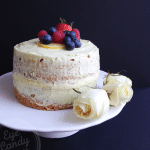
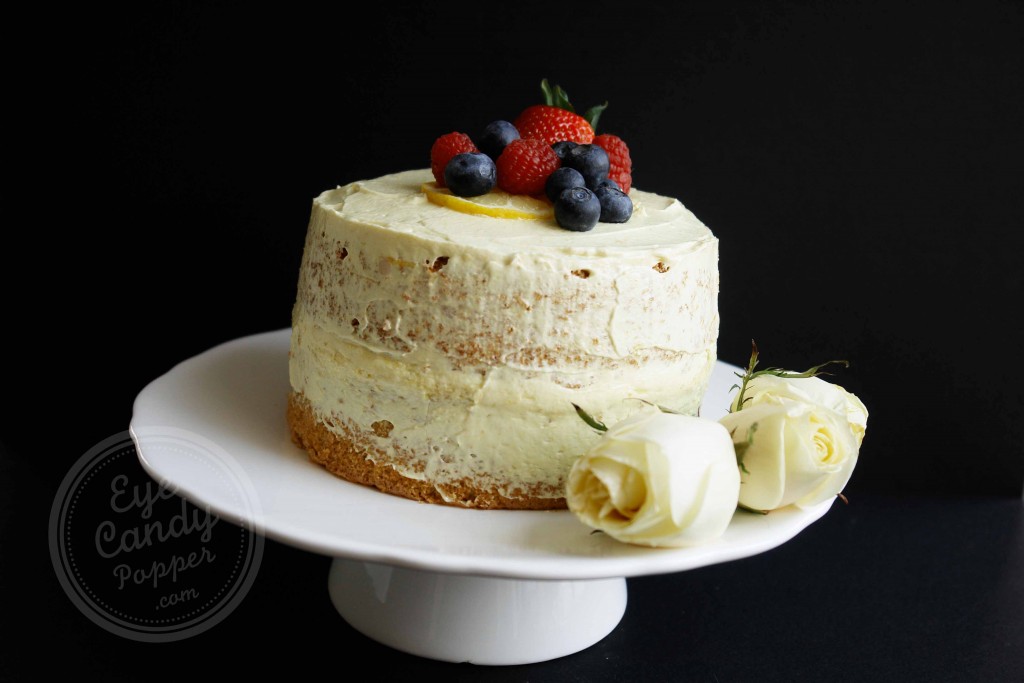
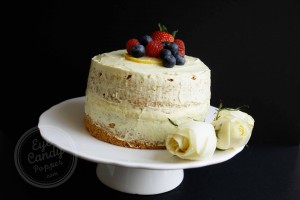
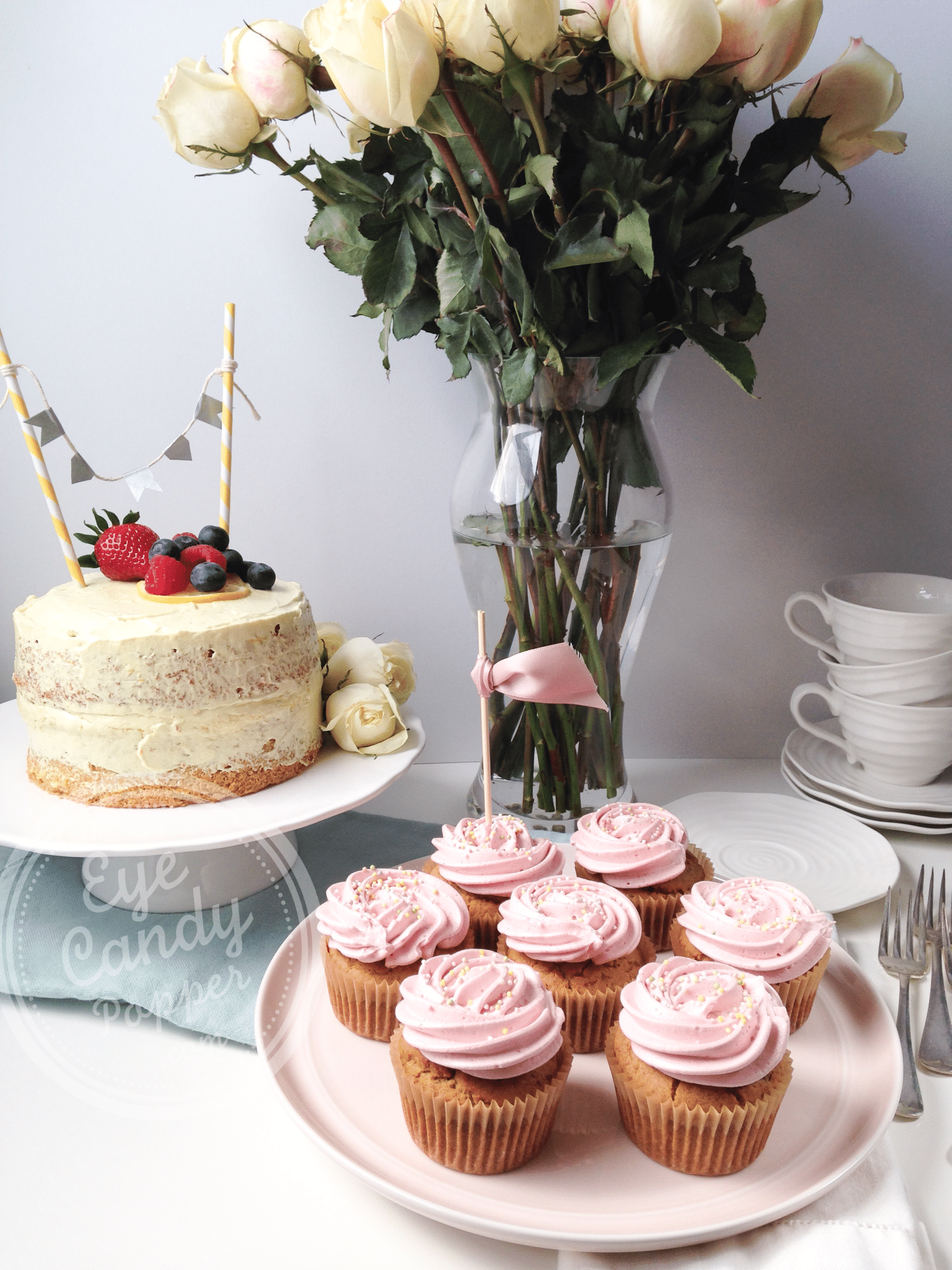
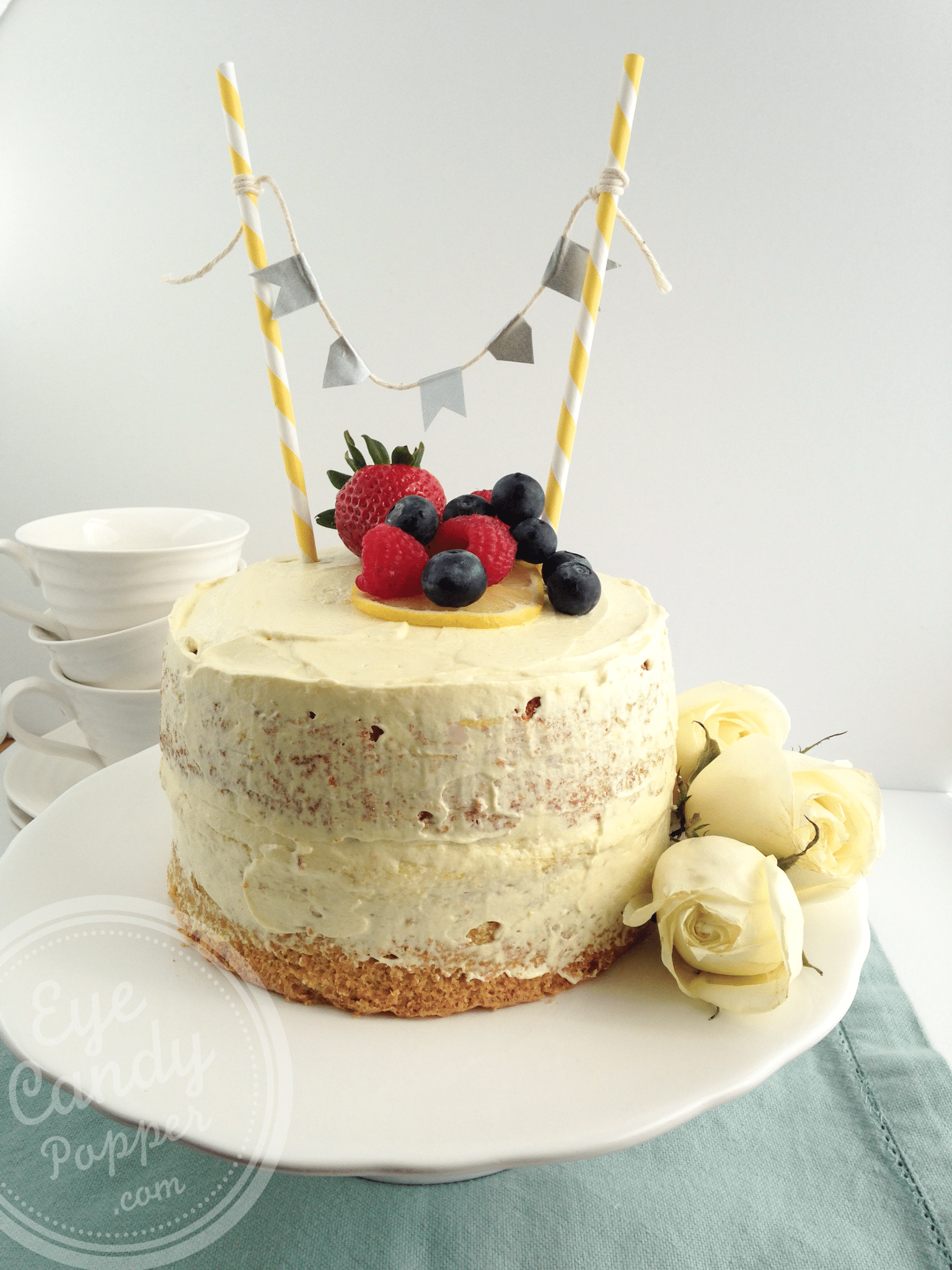

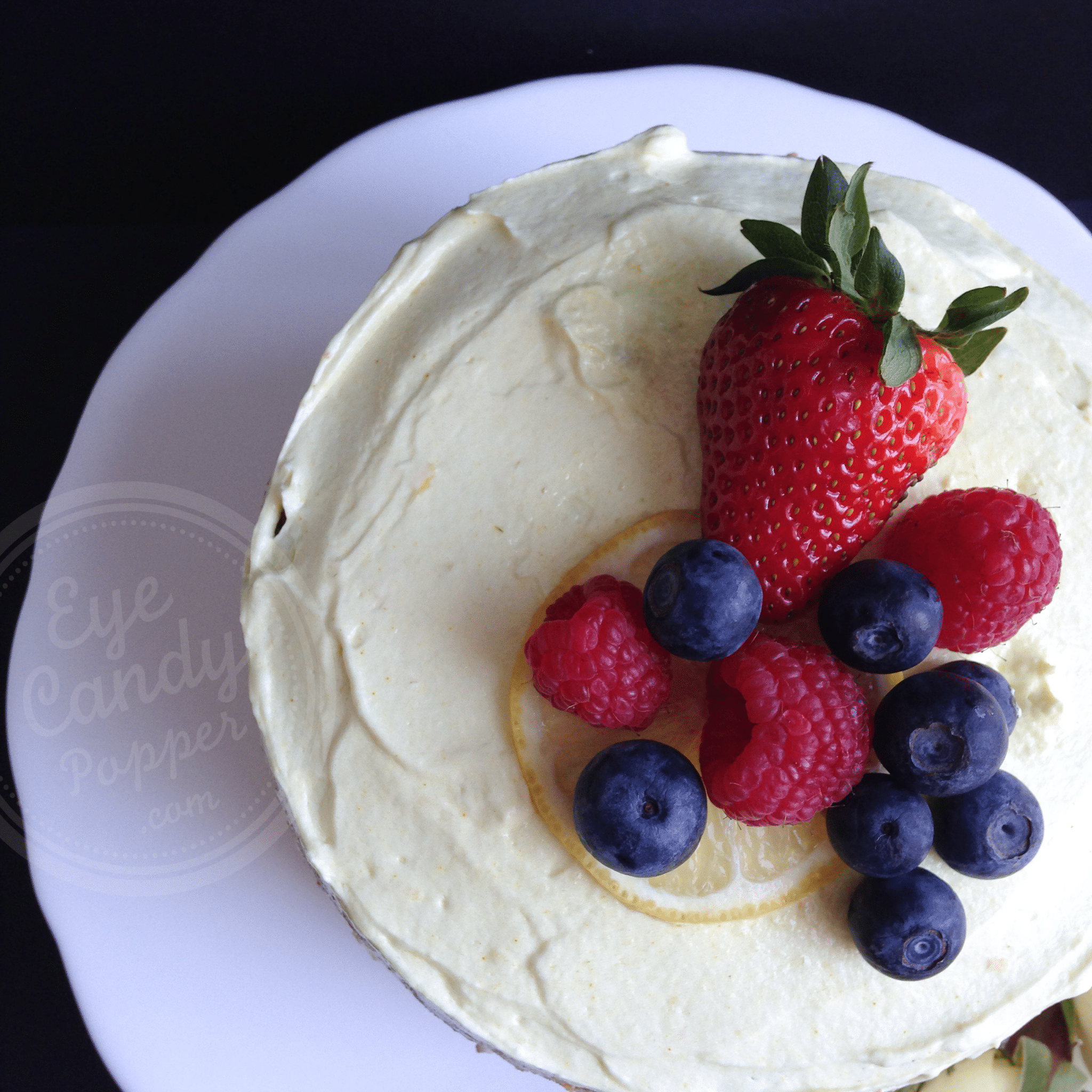
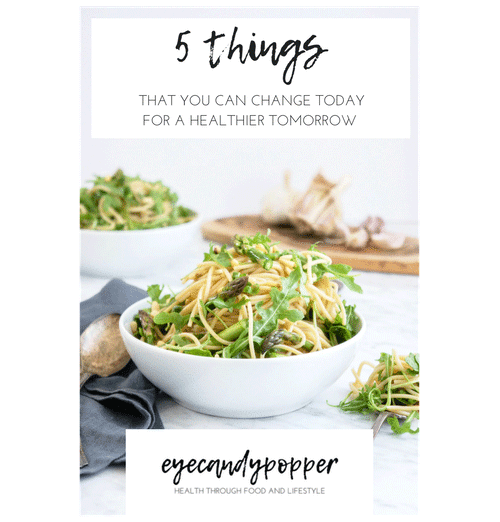
Such a pretty cake! I’m curious to try the spelt flour. I’ve been using spelt bran for some time. And I like the idea of using turmeric to tint the icing.
Give it a try and let me know! 🙂 I use it all the time, pancakes, muffins, etc.
This looks amazing! I’m looking forward to trying it. You take awesome photos as well.
Thank you! Happy baking! 🙂
I realized just as I was putting this in the oven, that the recipe never called for baking powder. I hoped that by some miracle, it would work out but it did not. 🙁 I don’t know how you managed to make it work without it!
Hi Christina! I’m so sorry it didn’t turn out well for you! I had to dig deep in my recipes to make sure I hadn’t forgotten to indicate baking powder, but the recipe is correct. Most sponge cake don’t need baking powder because of the ultra fluffy egg whites. There are a few key components to make it work, like making sure the egg whites are almost triple in size after you beat them with an electric mixer (using the whisk), and really being careful when folding in the other ingredients so that it doesn’t turn to liquid too fast. What kind of flour did you use? I put my spelt flour through a sieve to add air into it.But obviously, this kind of cake using whole-grain flour will never be as soft as one using a commercial enriched white flour, but it was still soft and fluffy 🙂 I’m just sharing everything I can think of off the top of my head. Let me know if you have any more questions. I hope you still got to enjoy the cake even if it wasn’t fluffy